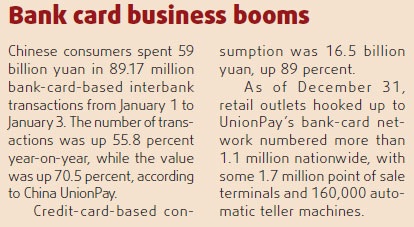Understanding the Delinquency Rate on Credit Card Loans: Insights, Trends, and Strategies for Consumers
Guide or Summary:Introduction to the Delinquency Rate on Credit Card LoansCurrent Trends in the Delinquency Rate on Credit Card LoansFactors Influencing the……
Guide or Summary:
- Introduction to the Delinquency Rate on Credit Card Loans
- Current Trends in the Delinquency Rate on Credit Card Loans
- Factors Influencing the Delinquency Rate on Credit Card Loans
- Implications of High Delinquency Rates on Credit Card Loans
- Strategies to Manage Delinquency Rates on Credit Card Loans
- The Role of Financial Education in Reducing Delinquency Rates
- Conclusion: The Future of Delinquency Rates on Credit Card Loans
---
Introduction to the Delinquency Rate on Credit Card Loans
The **delinquency rate on credit card loans** is a critical indicator of the financial health of consumers and the overall economy. It reflects the percentage of credit card loans that are past due, typically defined as being 30 days or more overdue. Understanding this rate is essential for both consumers and lenders, as it provides insights into spending habits, credit management, and potential financial risks.

Current Trends in the Delinquency Rate on Credit Card Loans
In recent years, the **delinquency rate on credit card loans** has experienced fluctuations due to various economic factors, including changes in interest rates, unemployment rates, and consumer confidence. As the economy recovers from downturns, many consumers find themselves in challenging financial situations, which can lead to an increase in delinquency rates. Staying informed about these trends can help individuals make better financial decisions and manage their credit more effectively.
Factors Influencing the Delinquency Rate on Credit Card Loans
Several factors contribute to the **delinquency rate on credit card loans**. Economic conditions play a significant role; for instance, during a recession, job losses can lead to a higher rate of delinquencies as consumers struggle to meet their financial obligations. Additionally, changes in lending practices and credit availability can impact how easily consumers can access credit and how they manage it. Understanding these factors can help consumers anticipate potential challenges and take proactive steps to manage their credit effectively.
Implications of High Delinquency Rates on Credit Card Loans
A high **delinquency rate on credit card loans** can have severe implications for both consumers and lenders. For consumers, it can lead to increased interest rates, penalties, and damage to their credit scores, making it harder to secure loans in the future. For lenders, rising delinquency rates can signal increased risk, potentially leading to tighter lending standards and a decrease in available credit. This cycle can create a challenging environment for both parties, emphasizing the importance of responsible credit management.

Strategies to Manage Delinquency Rates on Credit Card Loans
To combat the rising **delinquency rate on credit card loans**, consumers can adopt several strategies. First, creating a budget that prioritizes credit card payments can help ensure that bills are paid on time. Additionally, consumers should keep track of their spending habits and avoid accumulating debt beyond their means. Setting up automatic payments can also be a useful tool to prevent missed payments and reduce the risk of delinquency.
The Role of Financial Education in Reducing Delinquency Rates
Financial education plays a crucial role in reducing the **delinquency rate on credit card loans**. By understanding how credit works, consumers can make informed decisions about borrowing and repayment. Educational programs that focus on budgeting, debt management, and responsible credit use can empower consumers to take control of their financial futures. As awareness grows, it can lead to healthier credit behaviors and ultimately lower delinquency rates.
Conclusion: The Future of Delinquency Rates on Credit Card Loans
As we look to the future, the **delinquency rate on credit card loans** will continue to be an important metric for assessing consumer financial health. By staying informed about trends, understanding the factors that influence delinquency rates, and adopting effective credit management strategies, consumers can navigate the complexities of credit with confidence. Ultimately, a proactive approach to credit management can help mitigate the risks associated with high delinquency rates, fostering a healthier financial landscape for everyone.

This comprehensive exploration of the **delinquency rate on credit card loans** not only highlights its significance but also provides valuable insights and strategies for consumers to manage their credit effectively.